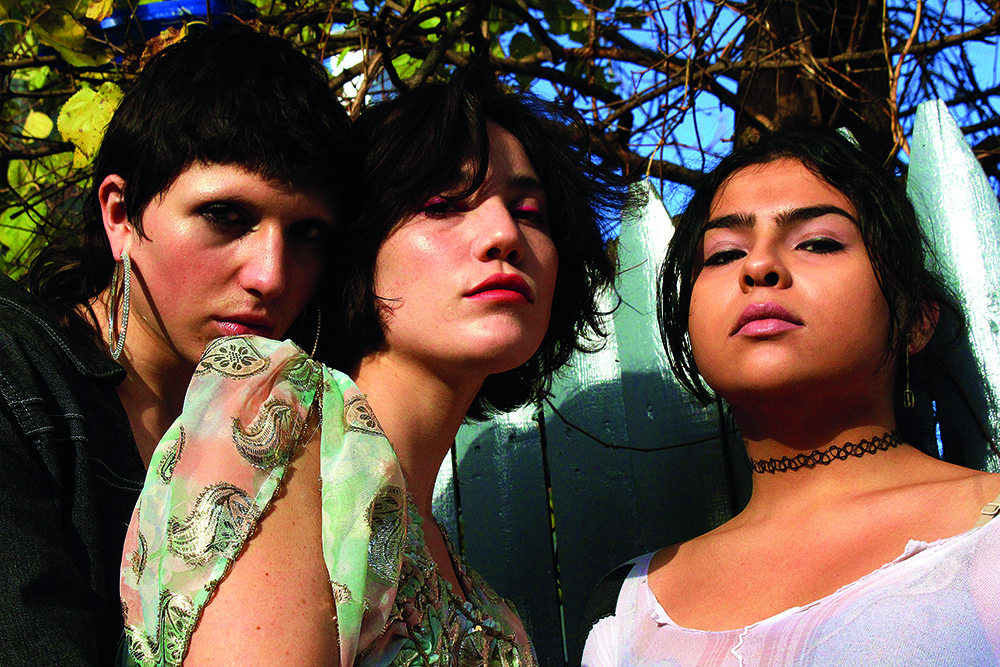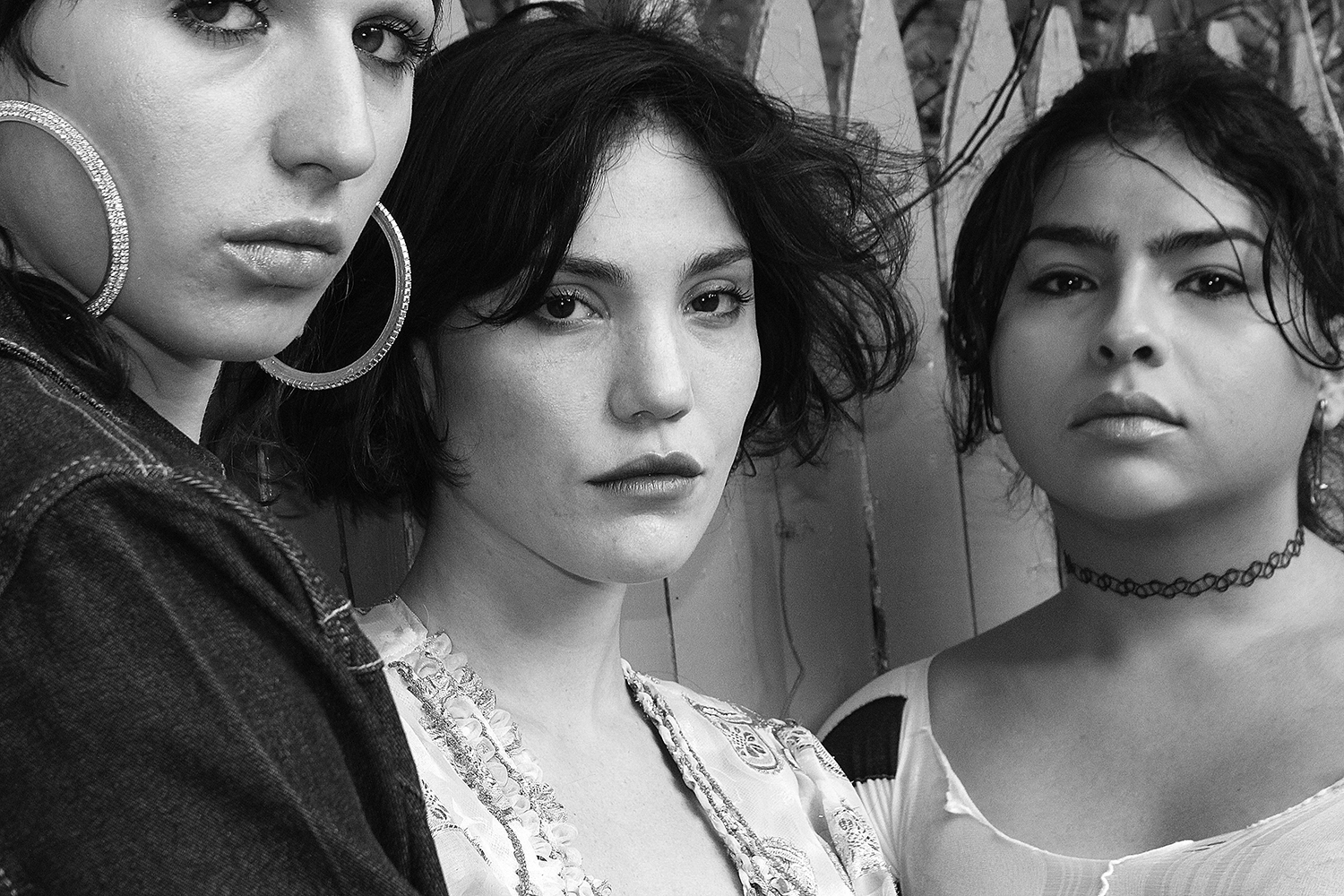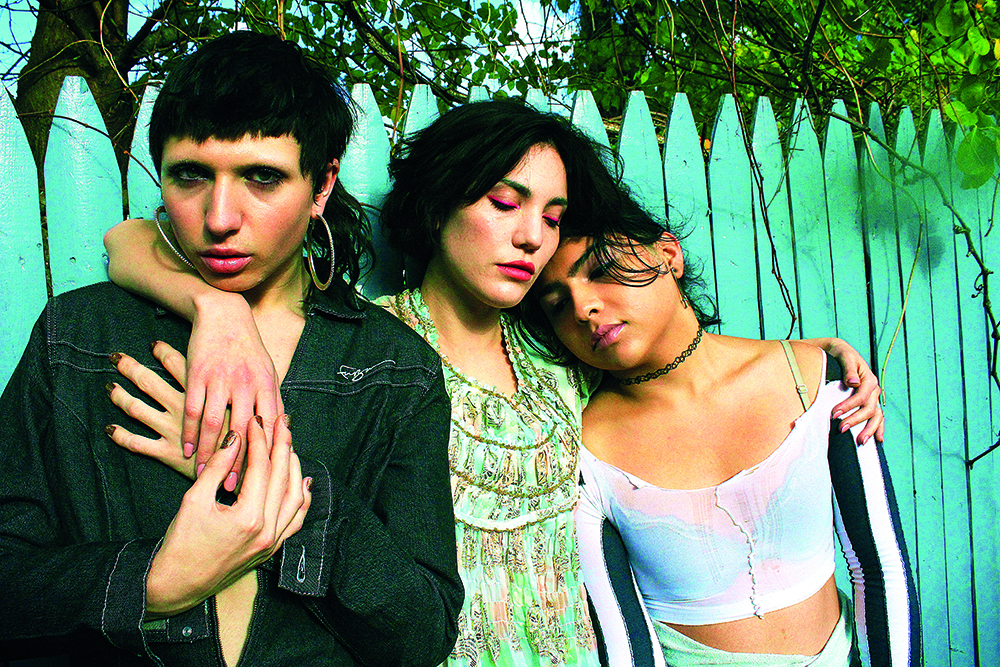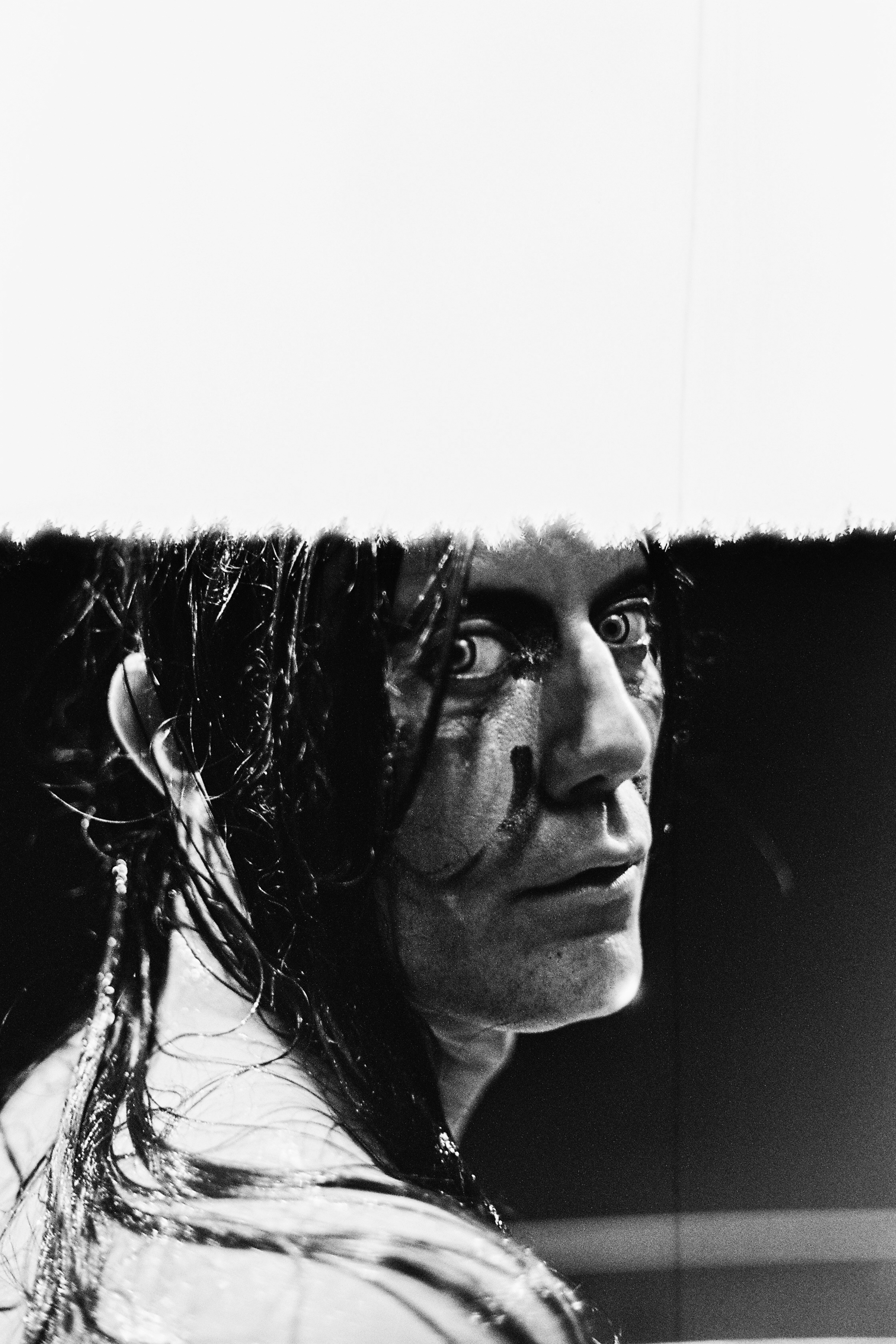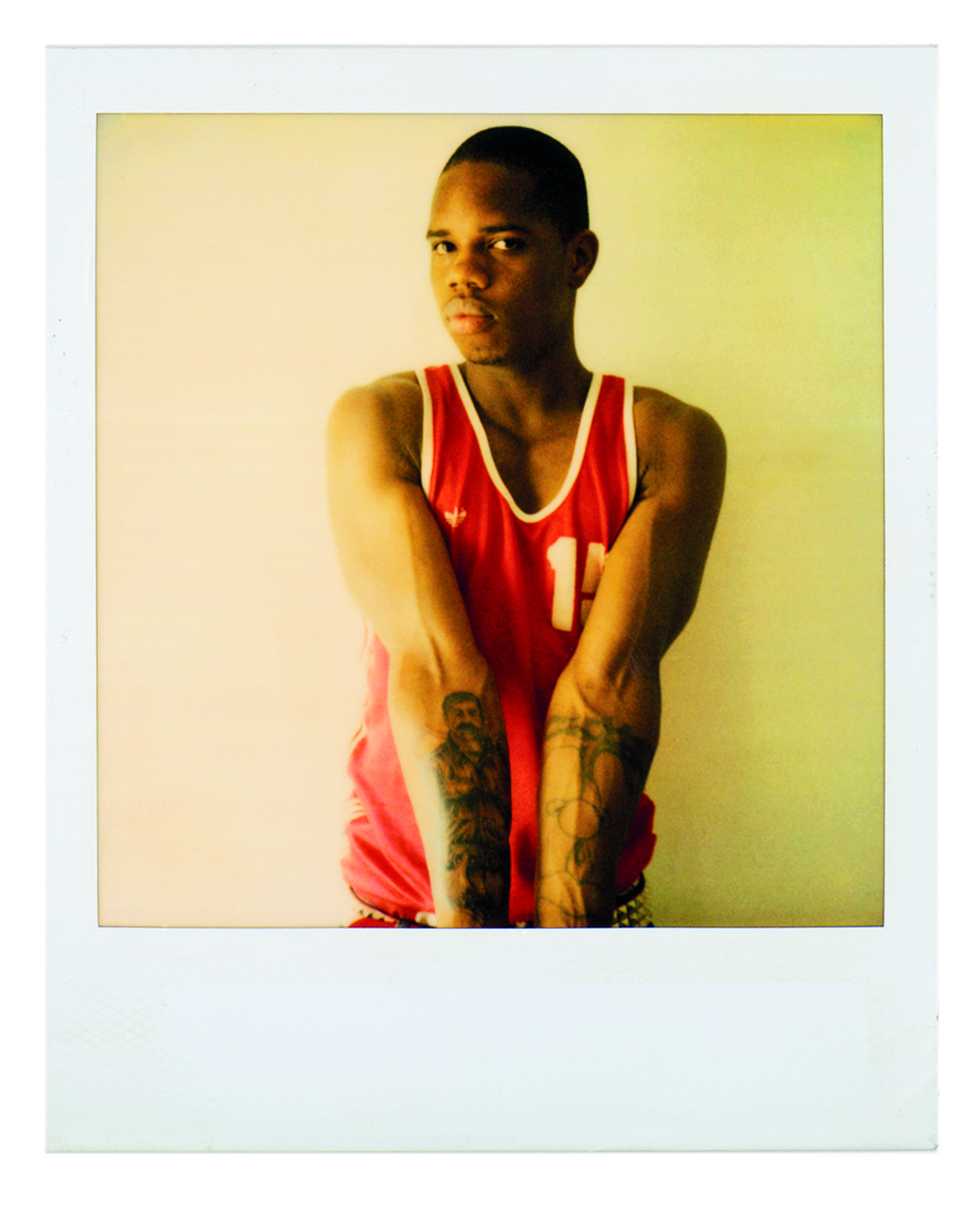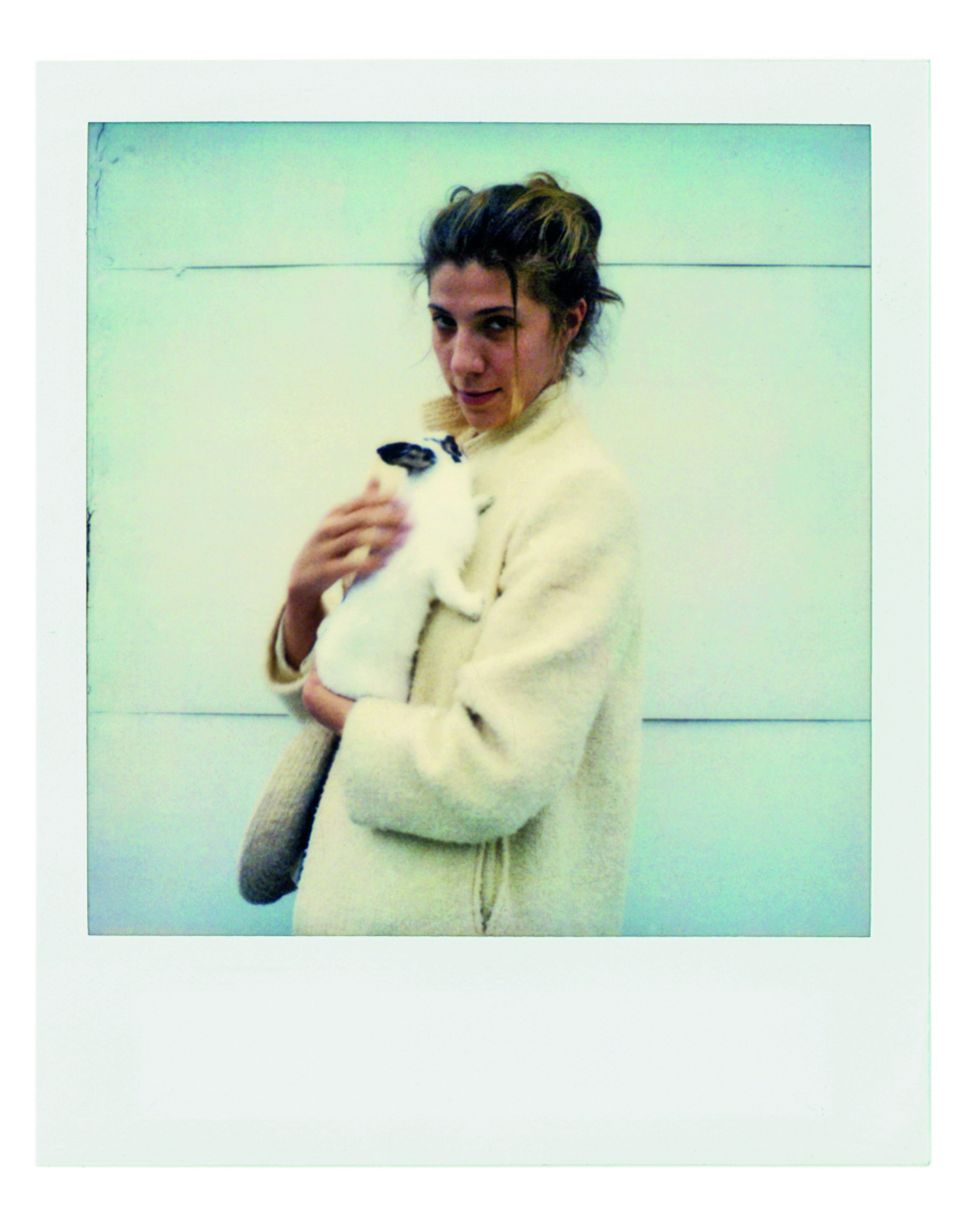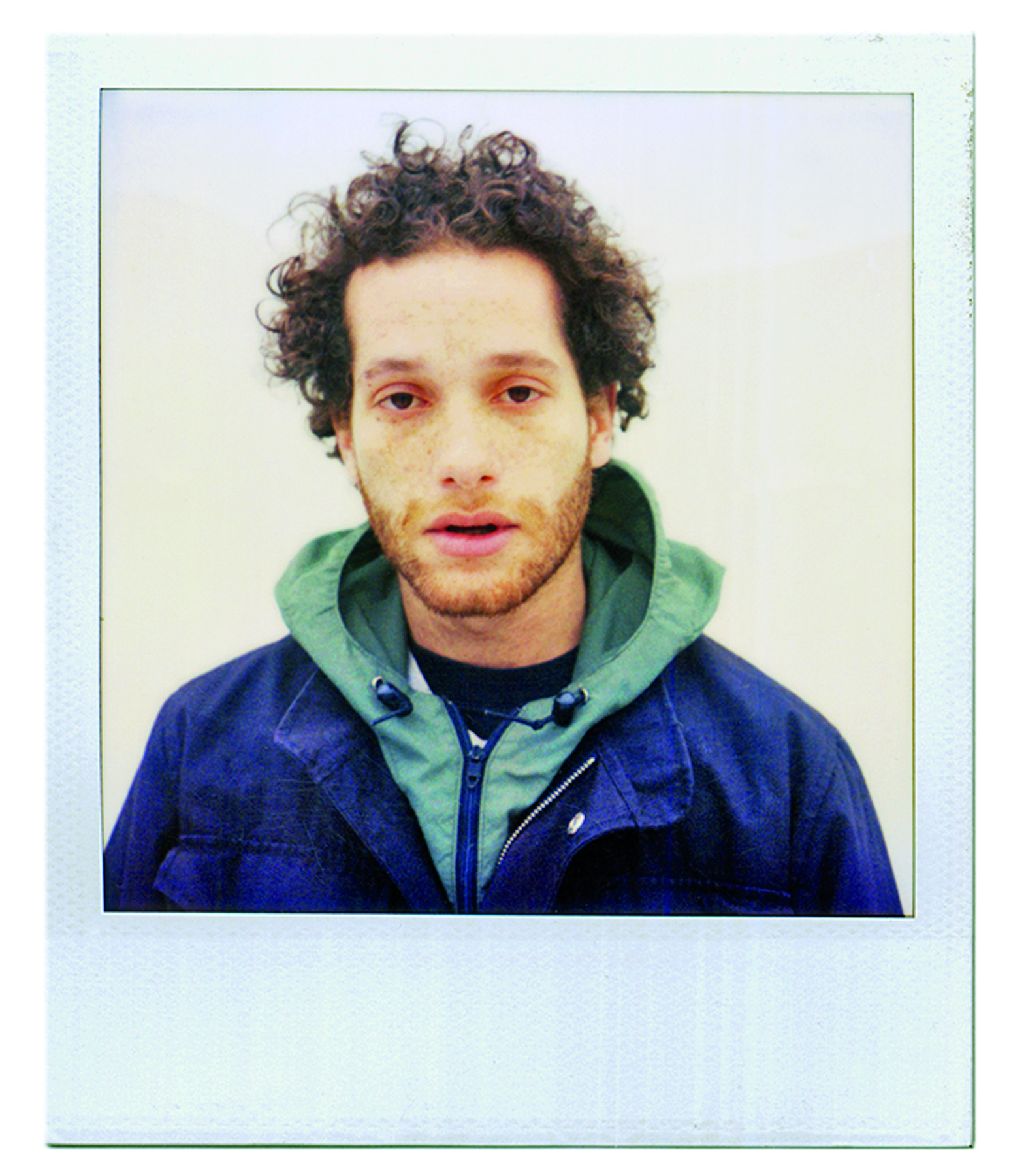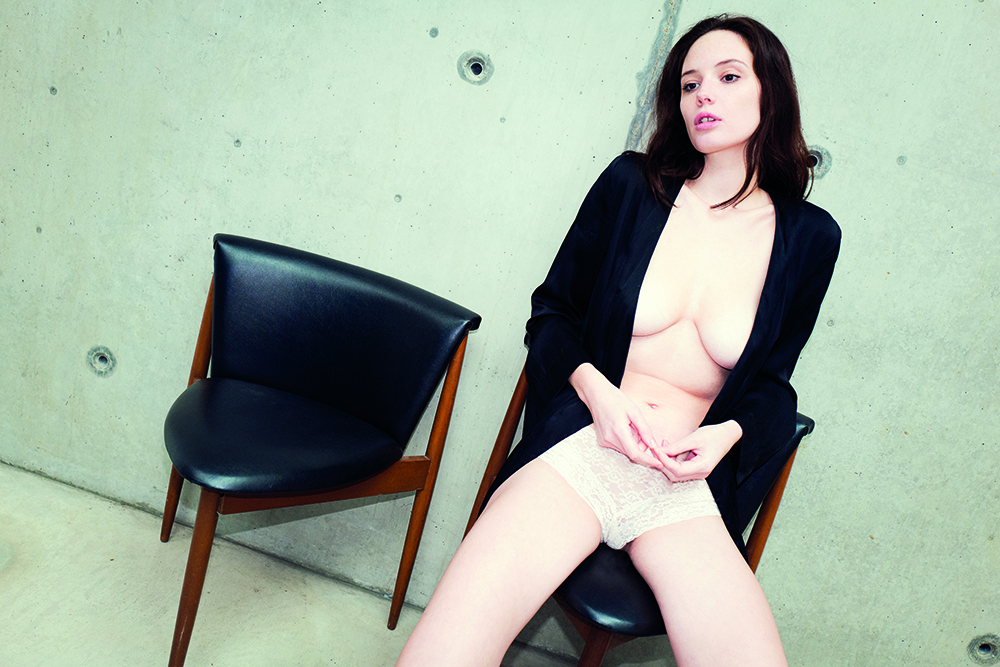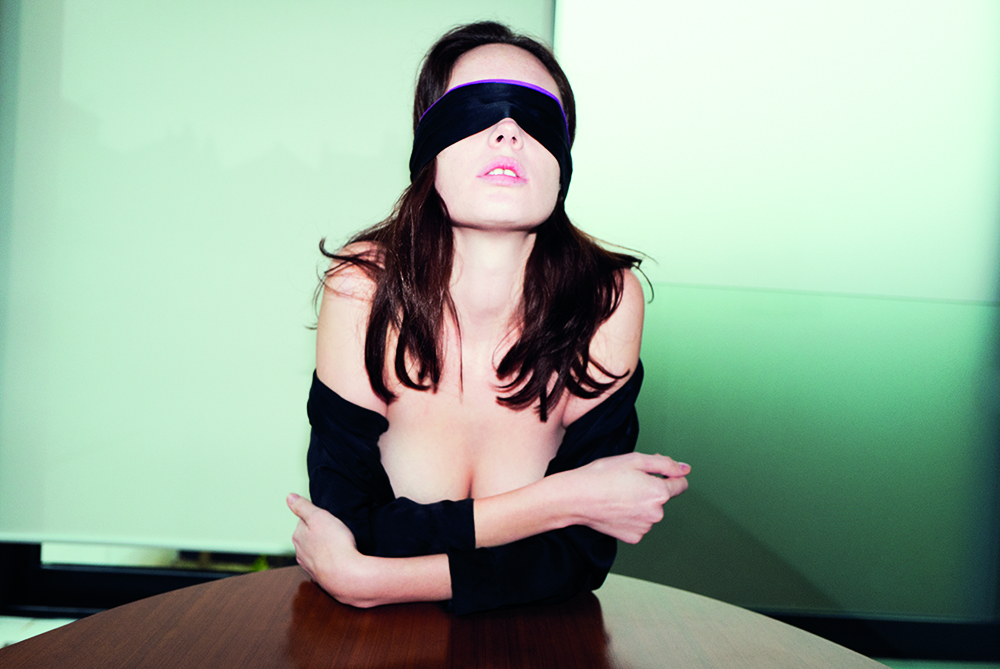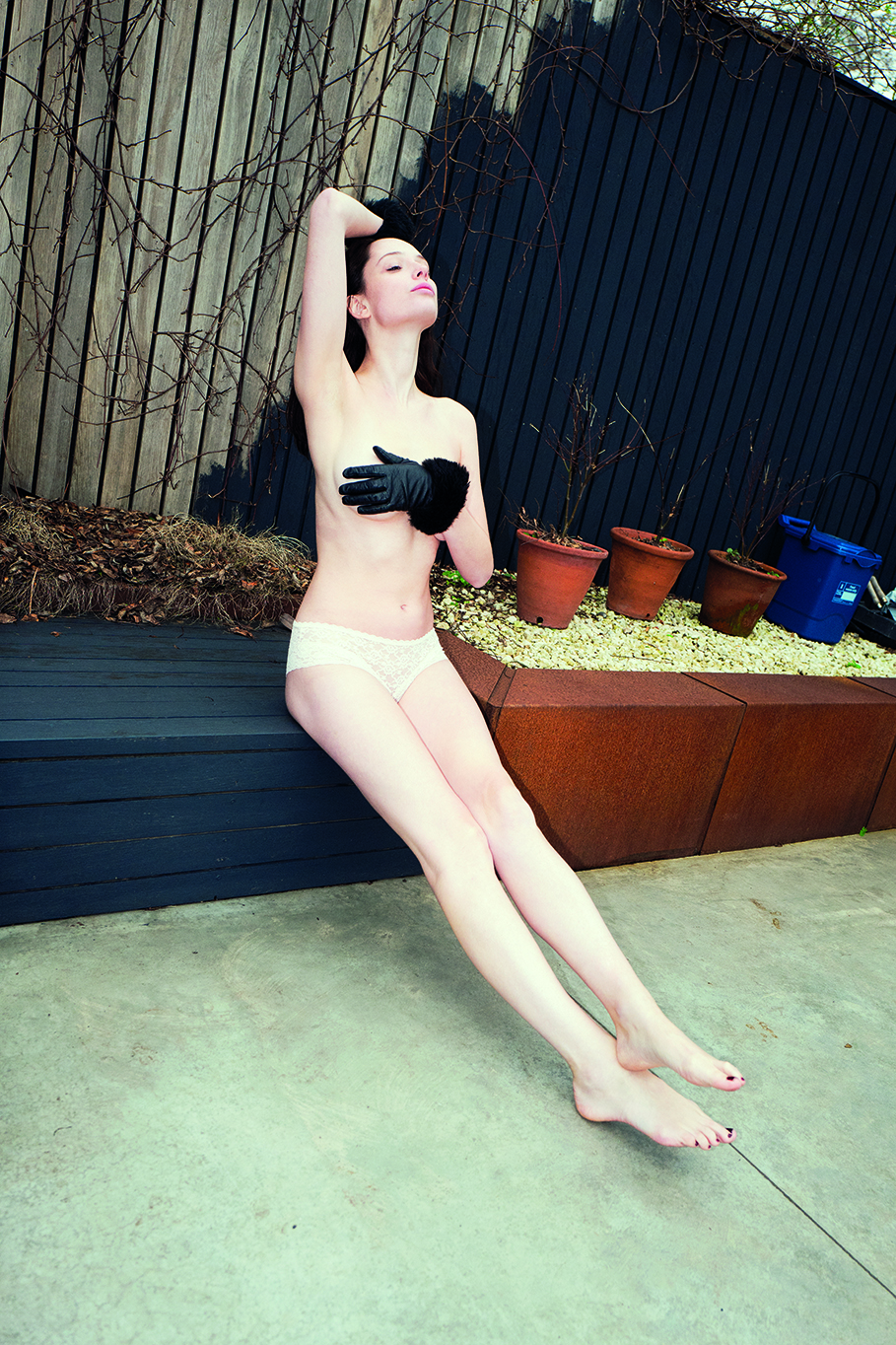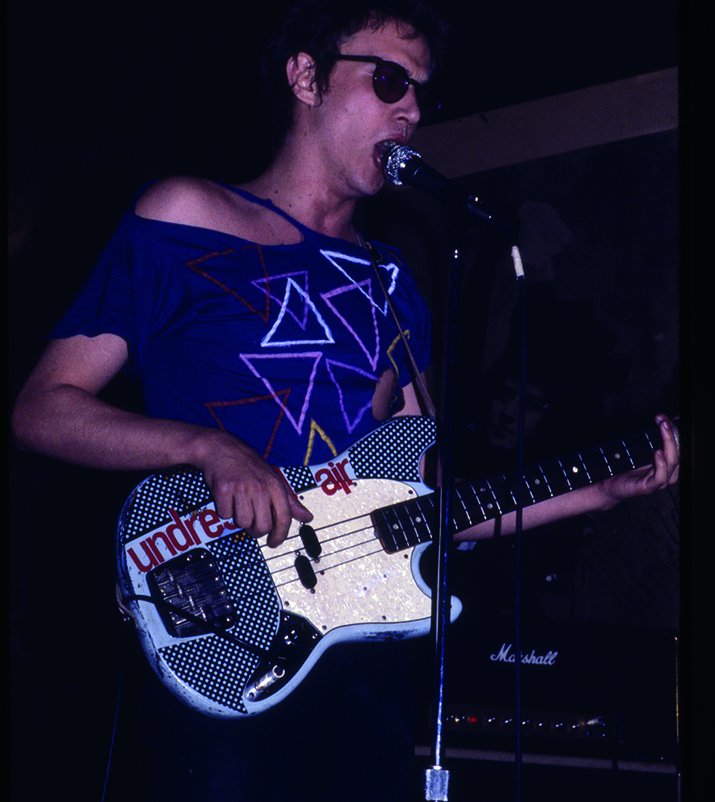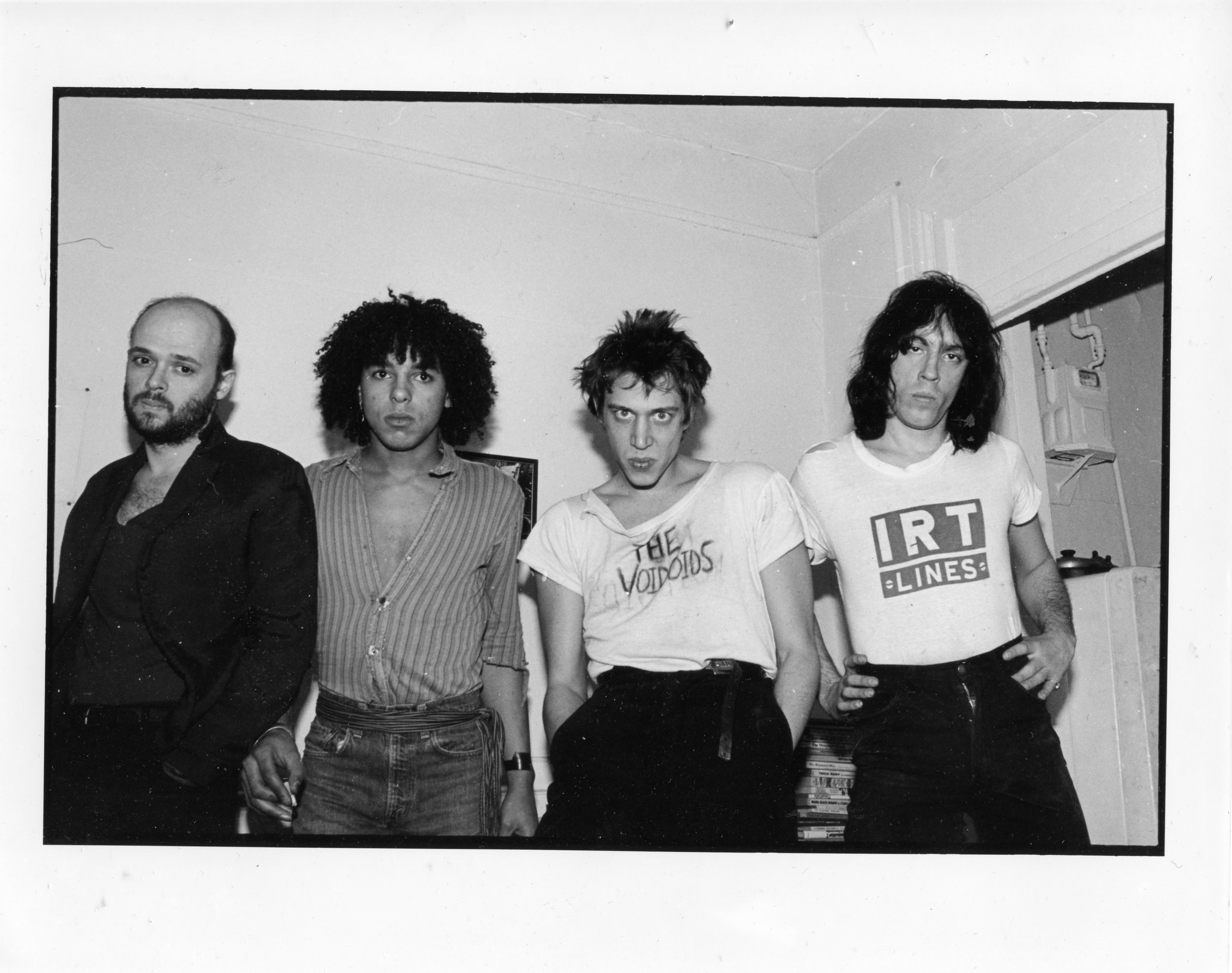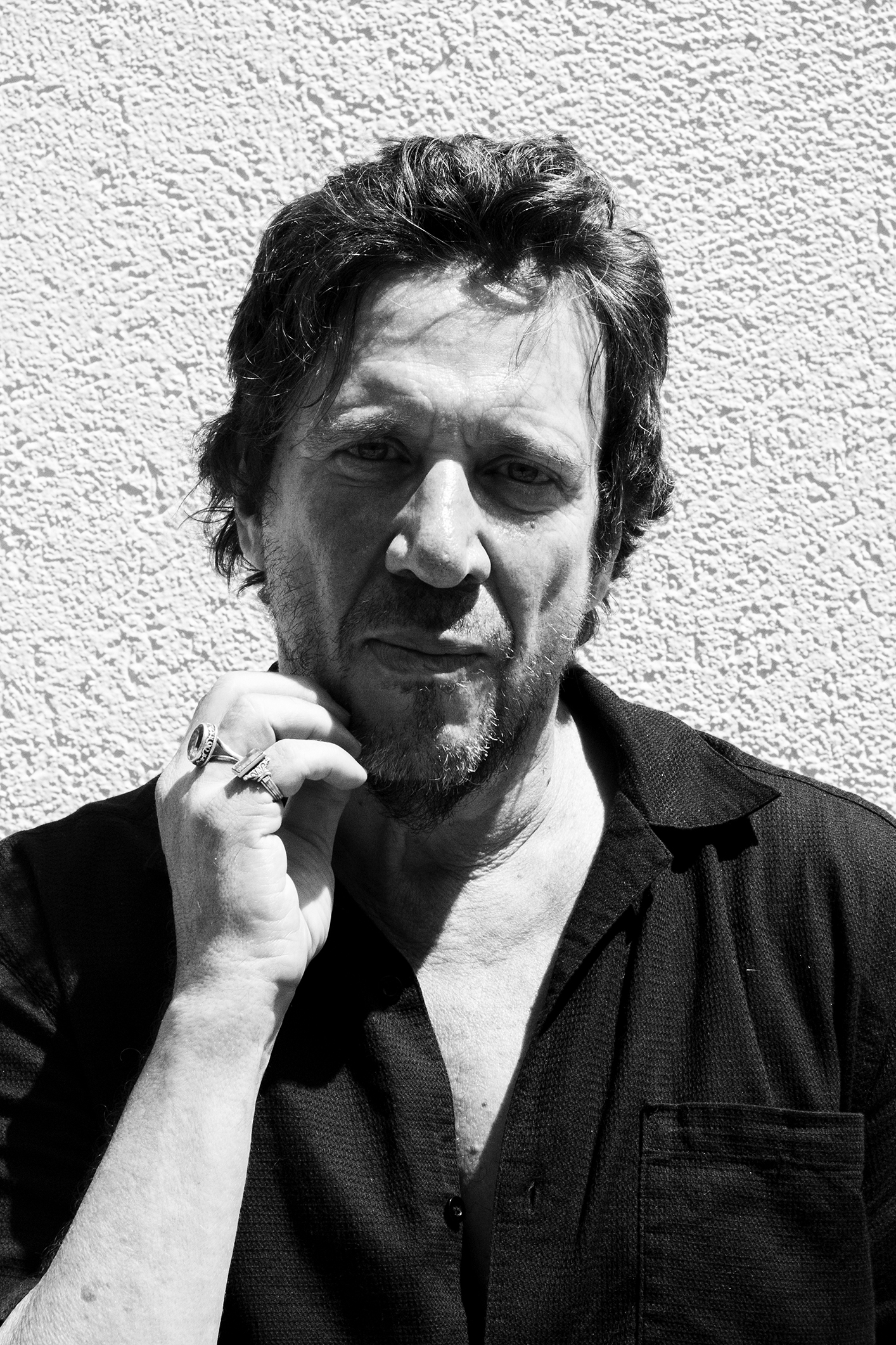Text and Photographs by Adam Lehrer
As demonstrated by his first New York solo show entitled Darkzone Martyrium at GCA Gallery in Bushwick, Brooklyn, Philip Hinge has an inherent talent to cloak the absurdities of contemporary life in a lush, art history-informed presentation. His paintings make use of wildly colorful brushstrokes, heady layering, and a unique interplay between the figurative and the abstract to present humorous and bizarre images that play on the viewer’s knowledge of pop culture and fine art. There is a lot going on in these paintings, to say the least. Hinge is a conceptual artist, but he understands that painting is at its most effective when there is something in the paintings that is inviting and can pull the everyday viewer in. “It allows the viewer kinda to get into it and kind of feel it,” says Hinge between sips of a beer at GCA. “It disarms the viewer and allows them to have genuine experiences with the work.”
Hinge is 28 years old, stands at about 6 foot 3, and has medium-length slick hair, well-defined cheekbones, and a winning grin. Guiding me through his new show wearing slim denim cropped over some shit kicker boots, an Emperor t-shirt, and a large billowing brown overcoat, it becomes clear immediately that this guy could become a massive success in an art world that likes its artists hip, young, attractive and marketable. But his work is far too sincere and bizarre in a way for Hinge to find any undeserving success. The GCA show is divided between recent paintings and painted chairs that adorn the gallery’s ceilings. Hinge’s paintings welcome the viewer in with rich, colorful brush strokes and light humor that belies a macabre and unsettling hidden tone. He has managed to express his personal tastes while making sense of them in a cultural context. “For painting, you have this backlog of people who’ve done it better so when you’re introduced to it and taught it, you are automatically trying to figure out how to stand out. It’s almost this huge burden,” says Hinge. “With painting, specifically, it’s like you either fight your way out of that or you succumb to the pressure of it, or you get around it and explore all the things you’re interested in while still creating a unique voice.” Hinge and I spoke at length about his current show at GCA, the misunderstood genius of Paul Verhoeven, the sexual psychology of Balthus, and the joys of extreme music and black metal.
ADAM LEHRER: From your paintings I often get a sense of a young artist trying to make sense of the vast swath of imagery that we’re faced with in the digital age. Are you trying to make sense of the world through painting?
PHILIP HINGE: I think that’s a pretty fair statement for most of us making stuff. We’re all kind of in the same pot, getting kicked around and looking for a coping mechanism.
You grew up in Jersey and I know you were drawing as a kid but what sparked your interest in visual culture?
I think it was movies. I grew up fairly sheltered. I would get to see a movie and it was such a great experience. This was back in VHS days and we didn’t have a lot of those around so I would draw and try to recreate my experiences watching movies. I’d see Star Wars and then draw Star Wars for the next year. You get this initial rush of recognizing shapes and figures and then you get more into how can you make it look better so that other people can respect it more and get on board with it.
You use a lot of black metal characters in the work, did deconstructing heavy metal imagery come from a genuine interest in it?
Oh, hell yeah. When I was a kid I was in a death metal band and it was the first music that genuinely terrified me. I got some black metal CDs when I was fourteen and one had a pentagram on it and everything: introductory level black metal, like Dimmu Borgir, which is probably all a fourteen-year-old can handle. And I came from a Christian background so it was all terrifying at first. And then as you get older and age with it and remain really involved with it - as far as always looking for new stuff - and you then see how sad it is. This group of people who are constantly trying to alienate themselves. Trying to be more extreme and inventive, right down to the clownish face paint. They want so badly to be taken seriously but when it falls flat it really falls flat. There’s something to that I like: the failure of black metal is what makes it great.
Yeah, it was definitely the first music I got into by myself. Did you ever read Terrorizer Magazine? It’s an amazing UK metal magazine, or it used to be amazing anyways. I remember in ‘99 they had written about the new Emperor album, Prometheus, which at the time was way too extreme for me. I couldn’t even listen to a song, but I wanted to like it.
I did the same thing. Coming from my Dimmu Borgir album I did a Google search for bands similar to Dimmu Borgir and it was like “Emperor” so I went to Best Buy and bought an Emperor CD and it was Wrath of the Tyrant. So the early stuff, no production quality.
Like they’re trying to do a symphonic thing but they don’t have enough money to make it happen.
Yeah, like a ninety dollar synth. I hated it at the time but it was the type of thing where I spent fifteen dollars of my fifteen-year-old money on it. So it was really important. And then I loved it. You dig your feet in and listen to it in the car ride home with your buddies and they’re like “this sucks” and you’re like “no, you suck.”
I read that you once wanted to be Balthus? When did you stop wanting to be Balthus and start to realize who you wanted to be?
I was eighteen when I got to art school and had no art training. Painting was the one thing I could do. So, I get to school and have no education, I don’t know much; I knew Rubens and Caravaggio and stuff like that. So the professor is taking us through first semester, and it was kind of boring stuff and he pulls up this Balthus and it was the one of the Salon with a little girl on the couch kind of reclined, she’s asleep from reading, and then there’s a girl who’s kind of bent over by the table on the floor reading a book and he was like “so if you substitute the table that’s hitting the girl on the couch mid-level with the little girl on the floor it’s two little girls engaging in oral sex.” This sort of compositional weird game. Balthus had to have known. I don’t think he was an active pedophile but he thought about it all the dang time.
Well I think it’s admirable in a way. Sexuality is the most powerful emotion in a human so if he found an outlet to express his sickness in a way that wasn’t hurting anyone, maybe that’s okay. Do we condemn thoughts or actions?
I always talk about it this way: so you have Degas and you have Balthus. The interesting thing about Balthus is that he has this profound psychology in his paintings. It’s just clear there’s something not right here. But then you look at Degas who was definitely having sex with fourteen and fifteen-year-old belly dancers and his paintings are easy; there’s an ease and okay-ness and security in his paintings that has something to do with the lack of inhibition. It’s like he has no qualms about sleeping with fifteen-year-olds, as opposed to Balthus who’s just like “ah, I’m a Catholic, I can’t be thinking these things.” So it did make it more interesting.
Right, it creates a mood.
Yeah, that was an introduction to the magic of painting. And so for a long time I was chasing that. I’d make these images that were kind of surface level colorful and bright and kind of friendly if you’re not really looking. It was just a total wack-off. A lot of what I was trying to get at with those was how we should be critical of Balthus in a way, for being a creep, but then I realized that in my own right I was just perpetuating all this stuff. And then it was like, “okay, I’m actually just making creepy paintings.”
Right, that’s asking the viewer to really go deep.
Yeah, we’re reaching too far. So then I did the first black metal figure and it was this kind of sad male figure. I realized painting doesn’t just have to be sexually repressed pseudo-narrative in the landscape. It can be everything. I think that’s kind of how we get to everything I’ve been doing now.
I like that reading of Balthus though. I feel the same way about Woody Allen movies. If you watch Manhattan, it’s impossible to not read into that knowing what he’s all about.
It’s the funniest thing because I don’t watch Woody Allen movies for that reason. Just out of protest. I never saw Woody Allen outside the context of knowing his back story so it was just too hard and weird. Why is it acceptable in film and painting? So it’s this weird thing of does an artist have to be a good person to make good art? Ultimately, no.
I read that you were early on into Odd Nerdrum and Eric Fischl and then later went through a big Grace Hartigan phase. Do you think that any three of those influenced your practice?
As far as the only one who’s still around, Grace Hartigan - I keep her on the bookshelves. Regarding Odd Nerdrum and Eric Fischl, they were entry level. It was good to see those people at the right time and then it was also good to be like okay I don’t really need these people anymore. It’s like relationships. You have all these arty relationships. You know, it’s like Odd Nerdrum for six months, Eric Fischl for six months. Quick flings. You cast them aside and you move on to Jasper Johns. Then you find Grace Hartigan and Lee Krasner. These are more sustainable relationships and then they dissolve as serious interests and then they still stay around so they’re sort of in your friend pool. Odd Nerdrum, you banish to the deep depths. There’s no room.
I do get really obsessed with certain artists, though.
Oh totally, yeah that’s totally natural to fall into it. And that’s kind of the magic of this whole thing: you can’t stop thinking about it.
We were talking before about people who refer to your work as happy, your work does have an inviting sense to it. Is it intentional to invite the viewer in?
I think it’s important because a lot of art willingly or unwillingly operates in this notion of elitism or like this preconceived “you must be this intelligent to enjoy...” you know?
That got really big, especially recently with guys like Dash Snow who was like, “I’m gonna jizz on a bunch of New York Post’s and if you don’t get it then you don’t get it.” I loved Dash Snow but there is a kind of snobbery in that and a play on the gullibility of the art world.
Having things be a little inviting is nice because you don’t want to shut people off; the colors are bright so initially maybe you get into that. Or like the composition, things are kind of nice looking.
I read that you’re a big Paul Verhoeven fan.
Yeah, he’s the best
That’s cool, I love him too. But I also see a parallel in the work almost. You know he was this mathematician and a high art guy but he applied his ability to trash and I feel like you portray sort of smutty imagery, whether it’s black metal imagery or porno mags, but you portray it almost gleefully and humorously. Are you interested at all in elevating trash?
I think what I got interested in through Paul Verhoeven’s work was if you look at it from one angle, you can totally buy that he’s type A. But if you look at it from some other angle he’s type B. You are asking, “Who is this guy?” What does he really believe in? So there’s this interplay between sincerity and cynicism. It’s like, either he’s really putting one over on us, or he’s dead serious about this shit. When Starship Troopers came out, everyone thought he was a Nazi propagandist you know? But he was really critiquing America and cautioning America about a fascist trajectory. 15 years later he’s considered a genius. I think in painting it’s the same thing: people can’t place me through the work. As far as this high and low thing, I think it’s important for painting, and this goes back to accessibility. It should be accessible, and by taking the highest ideas down a peg and elevating the lowest stuff, you put the work in a good position to be consumed. You can cloak weird art historical references amongst images remembered from your comic books when you were 5 years old.
There’s this great documentary about Cindy Sherman and it shows her in her studio, setting up her scene, and she’s vibing out to the Velvet Underground and she has Texas Chainsaw Massacre on in the background. Super inspiring. Do you find that the movies you watch and the music you listen to ever bleeds into the aesthetic of the thing you’re working on?
I guess obviously with the black metal thing, that was a big intrusion, and a welcome one. It’s just important to have noise. So if you can create noise that distracts you enough to get you into that weird space – you know when you have trouble sleeping because it’s too quiet? And so you turn on the TV and then you’re asleep? It’s the same way in the studio. I’ll go to the studio and put an album on and then the album will end after 40 minutes and if I’m really involved, and that album got me into a stream of good ideas, then I don’t put on another. Distraction can be a test. If I’m actually getting distracted by something then that means I need to reexamine how I’m feeling that day and get my head back in the game.
•




